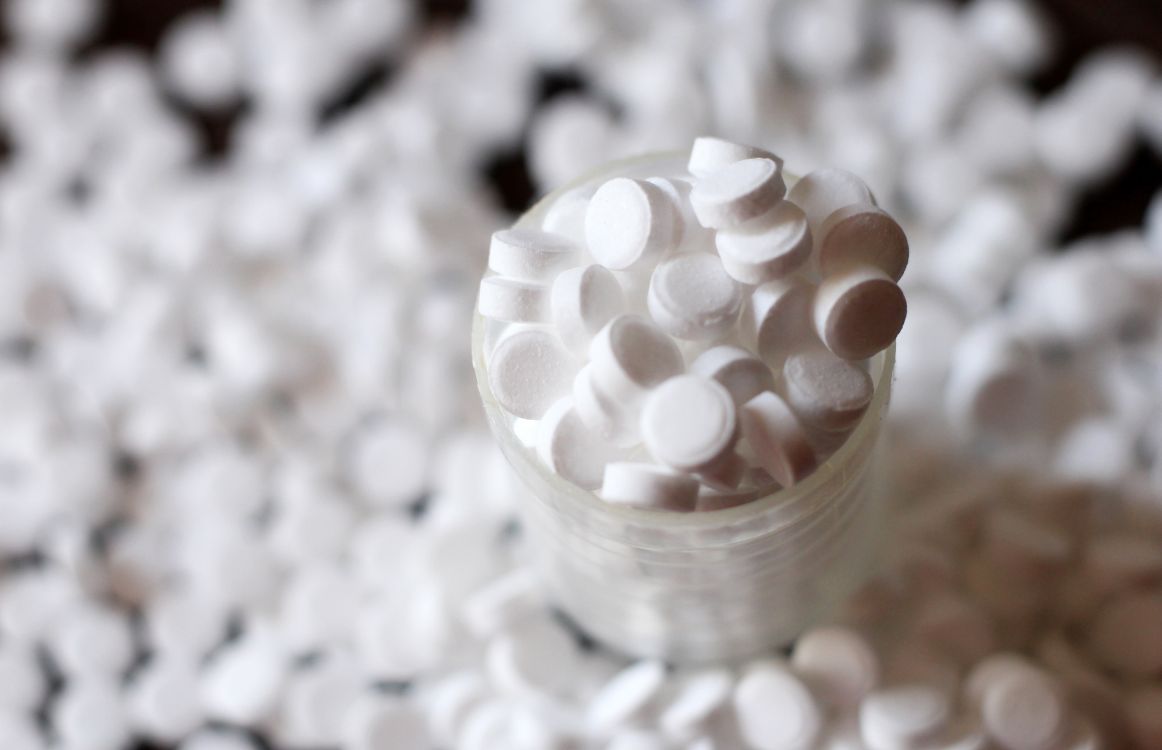Artificial Sweeteners and Yeast Fermentation

If you’ve been wondering what the big deal is with adding artificial sweeteners to your brew or wine, you’re not alone. Plenty of people in fermentation must navigate the line between fermentable and nonfermentable sugars. And certainly, both have their place. So, what’s up with artificial sweeteners and yeast fermentation?
Yeast Fermentation
To begin, yeast can only ferment real sugars, what we call fermentable sugars, for obvious reasons. You see, yeast has been around since virtually the beginning of life on earth. It is one of the earliest life forms, and it has, for millions of years, subsisted on a diet of sugar.
It is a single-celled living organism with an enclosed nucleus, making it a eukaryote, more like humans than bacteria, which are prokaryotes with no enclosed nucleus.
In fact, scientists believe that yeast actually evolved from bacteria to compete for food. Yeast can consume and convert sugar for energy much more efficiently than bacteria can.
In nature, yeast cells are always on the hunt for sugar, which they use as their only energy source. Without sugar, they will lie dormant until they sense sugar in their presence and get straight to consumption and conversion.
So, they consume sugar for energy and then they excrete alcohol, carbon dioxide, and water as waste products — lucky for those of us who love a great wine or beer.
Yeast cells are biologically inclined to be able to break down fermentable sugars and use them for energy.
Fermentable Sugars
The fermentable sugars in nature are listed below:
Each one of these sugars is either a monosaccharide or a disaccharide, which refers to the chemical chain of sugars locked inside the food source.
For example, fructose, glucose, and galactose are all monosaccharides. Sucrose, maltose, and maltotriose are all disaccharides.
Monosaccharides are easy for yeast to breakdown, digest, use for energy, and convert to waste. These sugars, then, are more attractive to yeast as the yeast cells do not have to use so much energy to digest them.
At the same time, disaccharides like maltose, which is more difficult to digest, can actually be broken down into monosaccharides via an enzyme inside maltose called maltase.
We see this in brewing when the brewer germinates, or malts, the grain. Germinating, or sprouting the seeds, makes the grain more sugary because the maltase inside the grain is unlocked. Thus, malted grain in brewing is easier for yeast to consume and convert, giving us beer.

Artificial Sweeteners
So, if we already know all of this about fermentable sugars in brewing and winemaking, why are we talking about artificial sweeteners at all? Because they have their place.
You see, artificial sweeteners, like those listed here, are made up not of sugars but of sugar alcohols.
- Stevia
- Erythritol
- Xylitol
- Splenda
- Lactose
- Maltodextrin
Even the most natural of the artificial sweeteners here, like stevia, made from plant extracts, undergo a chemical process in a lab that renders them completely, molecularly distinct from fermentable sugars. They are non-saccharide sweeteners.
Why Add Artificial Sweeteners to Wine or Beer?
What does this have to do with fermentation?
Well, some brewers, winemakers, and cider makers like to provide a sweeter, but still alcoholic product to their clients.
The problem is that is, during fermentation, the sugars that would make the beverage sweet are all consumed by yeast to make alcohol.
If you stop fermentation to try to preserve some of the sweetness, which you can do, you end up with a lower alcohol percentage.
And as brewers who bottle condition or sparkling wine makers know, adding sugar even after fermentation is complete will likely still result in the creation of more alcohol and carbon dioxide. Not a sweeter drink.
The solution to this problem then is to add artificial sweetener to taste after fermentation is complete.
This way, you have the alcoholic beverage you desire, and you can add a bit of Stevia or Splenda to make the experience slightly sweeter.
And everything will be right with the world.
Natural Sweeteners
Do be mindful when experimenting with artificial sweeteners to sweeten your beer, wine, or cider that natural sweeteners are not the same as artificial sweeteners.
In the modern world, many people are trying to avoid high fructose corn syrup and even pure cane sugar. To that end, they turn to what they consider more “natural” sweeteners, like honey, agave, monk fruit, and yacon syrup.
Note that each of these sweeteners is still rich in fermentable sugars, as they are all syrups and sugars taken directly from plant sources and typically not changed chemically or molecularly at all.
Thus, if you add any of these sweeteners which are truly fermentable sugar, you run the highly likely risk of continuing fermentation.
Cheers!
Are you still pitching fresh yeast every time? By reusing your yeast, you can save up to hundreds of thousands of dollars per year on just yeast alone!
Join the hundreds of brewers and vintners from all around the world using the Smartest Automated Yeast Cell Counter! Request a Free Demo Account today and experience firsthand how Oculyze can take your brewery or winery to the next level!


